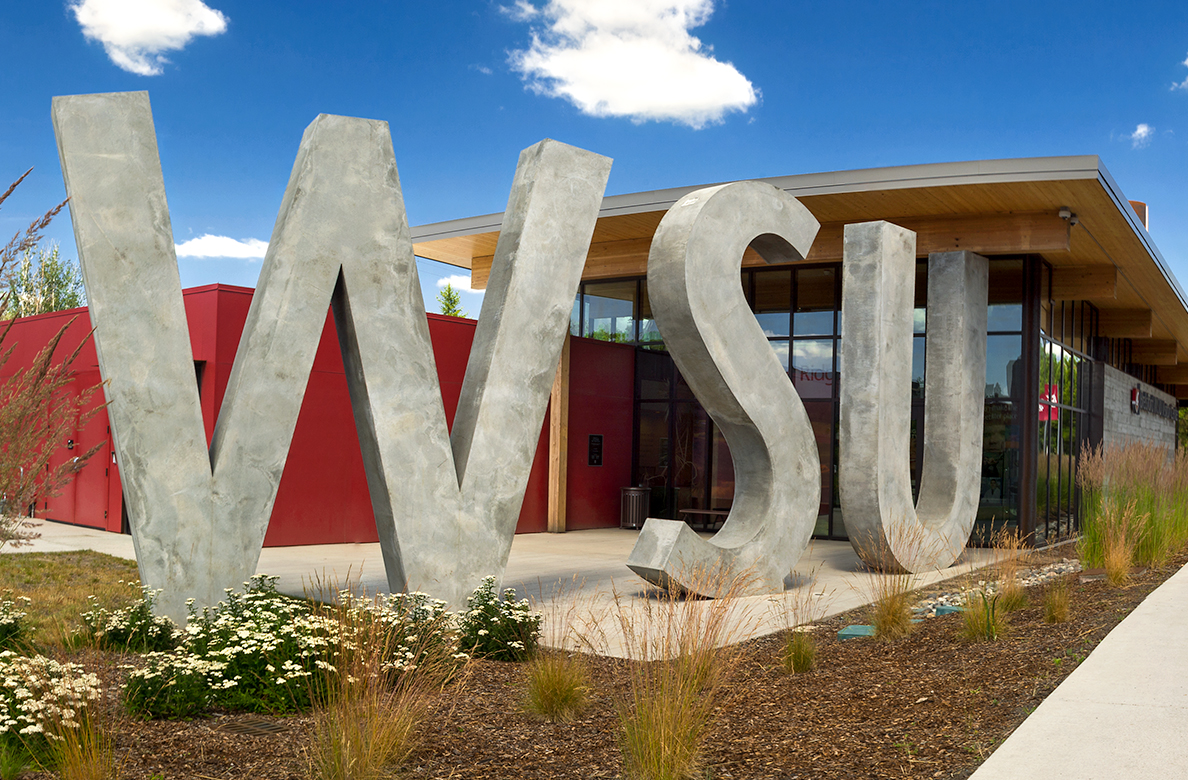
Excess fertilizers on food-growing soils are depleting naturally sourced nutrients from the soil and causing negative ecological effects downstream.
Shawnee Kasanke, a WSU-Pacific Northwest National Laboratory (PNNL) Distinguished Graduate Research Program (DGRP) student, is studying how fungi and bacteria might be used to share nutrients with plants in exchange for sugars as a replacement or supplement for synthetic fertilizers, and to restore soil health to arable land.
To help share Kasanke’s research and to promote the DGRP, Shawnee was selected to attend the 2023 Society of Advancement of Chicanos/Hispanics and Native Americans in Science (SACNAS) National Diversity in STEM Conference last fall. SACNAS is an inclusive organization dedicated to fostering the success of Chicanos/Hispanics and Native American college students and professionals in attaining advanced degrees, careers, and positions of leadership in STEM fields. The DGRP is committed to promoting diversity within the program. As a result, the SACNAS conference was an ideal conference to send a student to, as well as to promote the DGRP to prospective students at the conference.
“This conference was uniquely focused on diversity instead of scientific studies. Most sessions featured successful scientists who shared their journey, from why they chose their STEM field, to how they reached success,” said Kasanke. “As a result, many different types of science were presented throughout the conference.”
One particular focus of the conference centered around preparing students and professionals to speak about their research concisely to the public and relate scientific research to the issues of everyday people. The conference featured several sessions on science communications, a topic important now more than ever given science’s role in combating misinformation.
“My generation of graduate students places a significant amount of focus on trying to be better science communicators. The SACNAS conference hosted a few sessions specifically focused on science communications, and I attended one of those sessions to improve my skills at communicating my research to a general audience,” she said.
Kasanke put these skills into practice while joining others from WSU at an information table provided by the WSU College of Arts and Sciences. The information table provided her an opportunity to speak to people unfamiliar with root soil science research and promote the opportunities available through WSU and the DGRP to prospective students. She also shared information about the DGRP and the benefits of a graduate program that couples academic studies with hands-on research at a DOE national laboratory.
“I shared how my experience working with Dr. Sarah Roley, my advisor in the WSU School of the Environment, combined with Dr. Jim Moran, my advisor from PNNL, has been beneficial to me academically and professionally. The overlap between their areas of expertise has expanded my skill set, setting me up for success for my career,” said Kasanke.
Additionally, Kasanke shared how access to instrumentation at PNNL through the DGRP provided her with research experience she wouldn’t have had otherwise.
“Through the DGRP, I’ve learned a lot of high-level instrumentation skills at PNNL that I never would have had access to or been interested in if I did not spend time at PNNL,” said Kasanke. “The DGRP expanded my skill set, far beyond what it was, coming into a traditional Ph.D. program and will allow me a lot wider breadth of opportunities in the future.”
Rooted in the idea that the world’s most pressing problems can be solved if scientists with different cultures and identifies collaborate on solutions, SACNAS provides a community where scientists can connect to career resources and networking opportunities.
“A unique component of the conference was the number of different professional development and networking opportunities available,” said Kasanke. “I attended a session focused on how to successfully choose the right post-doc position after I finish my Ph.D. With mostly students attending this conference, a significant number of sessions focused on how to take your degree and turn it into a fulfilling and successful career.”
The DGRP provided financial support for Kasanke’s attendance of the conference. She’s grateful the DGRP is invested in helping students find opportunities to learn from other scientists and grow professionally through attendance of professional conferences such as SACNAS.
“The SACNAS conference inspired people from Hispanic and Indigenous backgrounds to seek out careers in STEM research. My key takeaway from the conference was to not let stereotypes or rejection keep you from pushing forward to being successful in your career,” said Kasanke.
